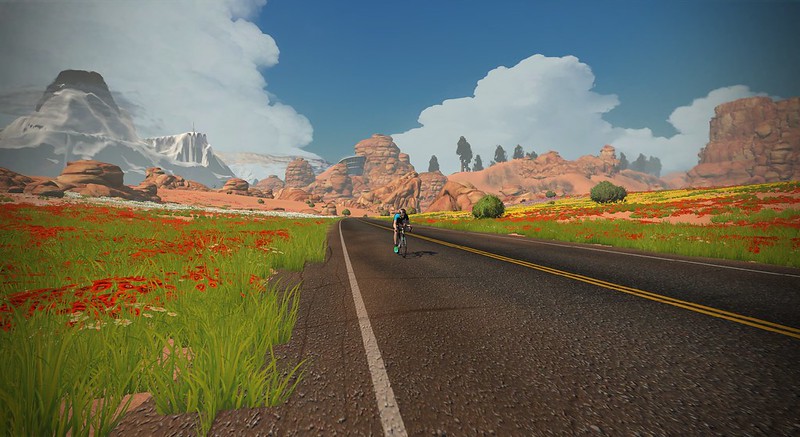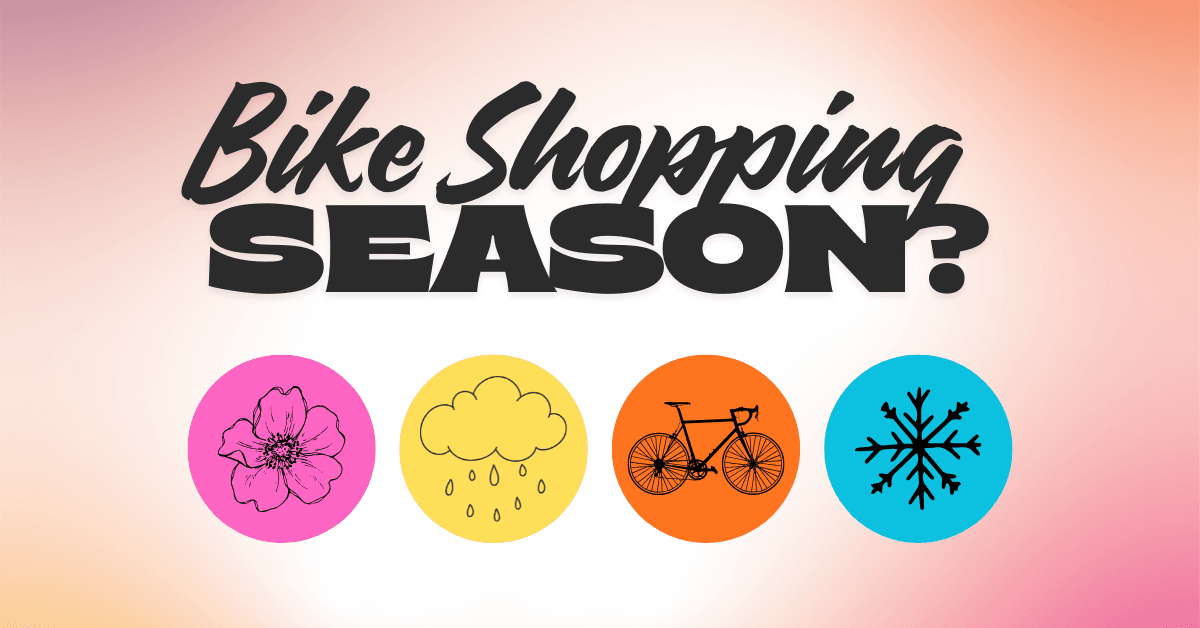Winter is well underway, and that means many people have taken their training indoors. If you’ve never trained on a bike trainer before, never fear! This guide will help you plan perfect moderate intensity rides to maintain your fitness over the winter season. Let’s get started!
We aren’t all lucky enough to live in Australia…
I spoke with a friend from Melbourne recently who reminded me that it’s summer down under. How nice is that? As the pros prepare to visit the Aussies for the Tour Down Under, many of us in the northern hemisphere are stuck inside with cold weather, ice, sleet, or snow.
What’s a dedicated cyclist to do?
You might turn to cross-training. Running maintains cardiovascular fitness and helps keep your lower-body strength. Swimming at an indoor pool provides excellent cardiovascular conditioning with low impact on joints. A little strength training helps you focus on core, upper body, and lower body exercises to get ready for the spring and summer. Spin classes can even sometimes scratch that bike ride itch.
Read more: These are the gym workouts that actually work for cyclists.
But eventually, everyone starts craving some time in the saddle of your road bike. That’s where the best invention for cold-weather cyclists comes in: the bike trainer.
Bike trainers are a powerful cold weather training tool.
Bike trainers are fantastic for winter cyclists. They give you total freedom to train indoors, avoiding harsh weather conditions like snow, ice, rain, or cold. Excluding the noise, you can train whenever you want, regardless of the time of day or weather. No need to worry about traffic, lighting, or road conditions.
But it’s not all just “ride when you want,” especially if you want to stay in shape. With a bike trainer, you can maintain a consistent training schedule, which prevents loss of fitness during the off-season. Training software can help you create structured workouts and track your progress.
By using a bike trainer during the winter, cyclists can stay motivated for fitness and arrive at the spring riding season in top shape!
This winter, focus on moderate intensity, “Zone 2” training.
Are you familiar with workouts in Zone 2? This low-intensity training involves steady-state exercise, typically at 60-70% of your maximum heart rate. This is sometimes called “conversational pace” as you should be able to hold a conversation while doing the workout. Its key focus is on building aerobic endurance. Zone 2 training is crucial for developing a strong foundation for all other types of exercise, including high-intensity burst or HIIT workouts.
Bike trainers offer a controlled environment where you can maintain a consistent pace and monitor your heart rate effectively. This makes them ideal for moderate intensity training!
Why is it so helpful to increase your Zone 2 training during the winter months? On a trainer, you can stay within the Zone 2 range more consistently. That type of consistency is harder to find outdoors, so it’s a great idea to do it during the winter to build your endurance base for more fun adventures in warmer weather.
Sold on the idea? Here’s how to get started planning your bike trainer workouts this winter.

Photo by David Hellmann via Unsplash.
4 tips for perfect zone 2 workouts on the bike trainer.
1. Schedule your workouts.
Scheduling at least 2-3 Zone 2 bike workouts per week is crucial for building or maintaining a strong aerobic base. When you train in Zone 2, you enhance your body’s ability to efficiently utilize oxygen, leading to increased endurance. That’s why it’s so important to be consistent! Incorporate a few steady-state rides into your weekly routine, stick with it, and you’ll lay a solid foundation for faster rides, longer distances, and improved performance in all areas of cycling.
2. Select the right trainer for your needs.
For Zone 2 training, you can use either an on-wheel or direct drive trainer. While a smart trainer offers the most immersive experience with Zwift, it’s not strictly necessary. You can use a standard trainer with a speed sensor and cadence sensor to connect to Zwift and control your Zone 2 workouts. However, a smart trainer provides additional features like automatic resistance adjustments. If you’re just starting out with Zwift or have a limited budget, a standard trainer with sensors is a viable option. As you progress and want to enhance your Zwift experience, you can consider upgrading to a smart trainer!
3. Choose the right settings and track your efforts.
When using a bike trainer for Zone 2 workouts, it’s important to use all the tools at your disposal. Set the resistance appropriately — not too high or too low! You should maintain a comfortable, conversational pace. If you’re using ERG mode on a smart trainer, you can set it to match your predicted power output in zone 2. Indoors, you can also use a heart rate monitor to ensure you’re staying within the zone 2 range.
4. Explore in a virtual world.
Bored with your everyday rides after just a few weeks? Have you tried Zwift?
Zwift is a virtual world for cycling that connects to your trainer. It offers a variety of training programs and workouts, including those specifically designed for Zone 2 training. And even if you’ve never used Zwift or its competitors before, you’ll only need a few things to get started.
While a smart trainer offers the most immersive experience with Zwift, it’s not strictly necessary. You can use a standard trainer with a speed sensor and cadence sensor to connect to Zwift and control your Zone 2 workouts. However, a smart trainer provides additional features like automatic resistance adjustments. If you’re just starting out with Zwift or have a limited budget, a standard trainer with sensors is a viable option. As you progress and want to enhance your Zwift experience, you can consider upgrading to a smart trainer!
Zwift offers a trial period for new members. There are also free alternatives like IndieVelo and MyWhoosh if the subscription is too much for your monthly budget.

Photo by Kai Nehm (via Flickr)
Closing thoughts.
I hope this article inspired you to get in some Zone 2 workouts this winter. Remember: your fitness levels in the spring will be correlated to how much exercise you sneak in this winter. It’s never too late. Even if you’ve been relaxing since January, training now will make a difference and help you get stronger for spring. A bike trainer can be a perfect way to do that!
How is your winter fitness plan shaping up so far? Share your best tips for how you like to use an indoor trainer during the colder months! ★










Leave a Reply